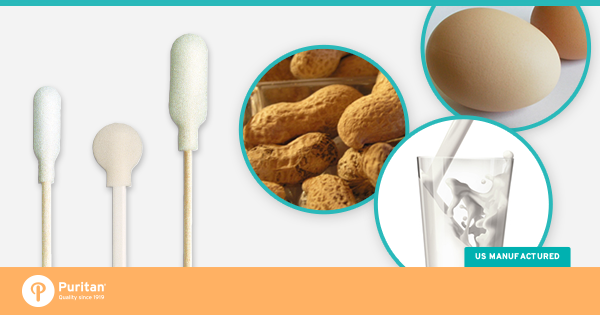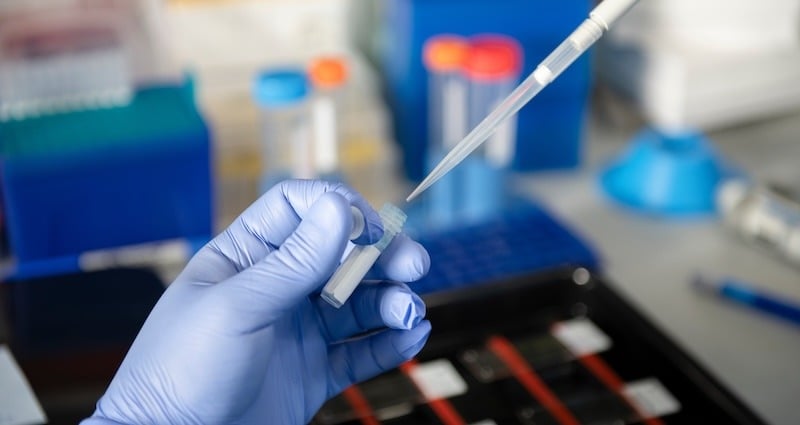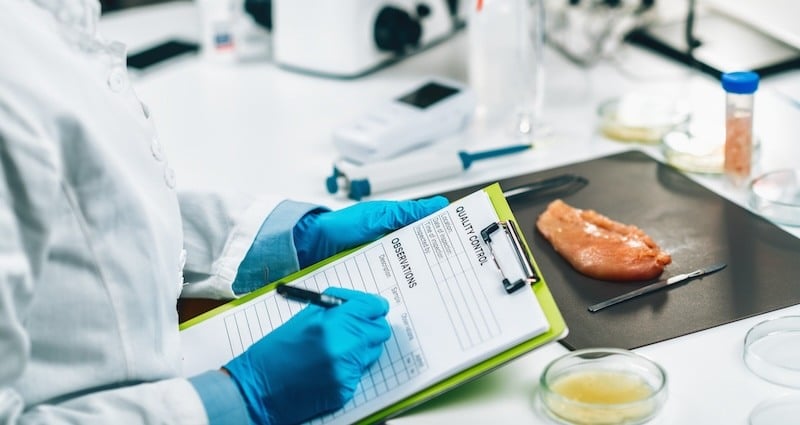
When 2015's FDA Food Safety Modernization Act (FSMA) was signed into law, a key requirement stated that covered facilities must establish and implement a food safety system that includes analysis of hazards and risk-based preventive controls. One of the top hazards requiring preventative controls? Food allergens.
All allergens are proteins, specifically, the protein content from an allergenic source. The higher the level of protein from the allergenic source, the greater the threat. In April alone, Foodsafety.gov announced 11 different allergen-related food recalls. Clearly, allergen control is now a significant part of overall food safety programs for the industry.
FSMA compliance dates for some businesses begin in September 2016. Will your company be up to code? With Puritan products it can be. Learn how to validate and verify your allergen control approaches here.
Know What You're Dealing With
Not all allergens are alike. Joseph L. Baumert, Ph.D., and Steve L. Taylor, Ph.D. of the Food Allergy Research and Resource Program at the University of Nebraska, Lincoln have written extensively on the subject. The pair notes that the form of allergenic food—liquid, powder, paste—is important as some types are more difficult to remove than others. Consequently, they recommend the focus be placed on the component with the highest allergenic load.
Swab samples should be regarded as an indication of the presence/absence of the allergen protein(s) detected by this kit. Swab samples must not be used to quantify the absolute amount of allergen proteins, but should be used as a general indication for monitoring of the levels present.
"In many cases, it may not be necessary to validate removal of all the allergens from a particular formulation. If a vast difference occurs in allergen load (e.g., two allergens in the same formula), then the validation could likely be focused on the allergen in the highest amount. Even in situations where the allergens are more equitable in concentration in the formulation, only one of the allergens can be monitored if all are present in the same form."
But in a case where one allergen is present as a paste and another as a liquid, it may be necessary to validate the removal of both.
Use a Superior Swab
Accuracy is critical to environmental sampling and when it comes to allergens, cotton won't cut it. Puritan's medical-grade polyurethane foam swabs have the high particle collection capacity needed for surface allergen testing. And the tips are thermally bonded to the swab handles to ensure the foam is lint, adhesive, and residue free. Looking for something more? We also offer a Sterile Standard Foam Swab.
All of our foam swabs are available in a variety of tip shapes, sizes, and handle configurations so they'll fit in the hard-to-reach areas of your facility. If you need help choosing the right protein tests swab, check out our foam swab cross reference sheet.
Develop Standard Operating Procedures
Once you know what allergens you're testing for and how you're going to test for them, standard operating procedures for dealing with allergens should be developed. Use your production facility's current sanitation procedures as a baseline. Complete your process and then take multiple swabs of equipment on the line. If no allergen residues are detected, your current SOPs are appropriate. If residues are detected, further sanitation is needed.
Doctors Baumert and Taylor supply the following recommendations:
-
Do not use sponges to attempt to remove allergens from equipment surfaces. Sponges tend not to release protein/allergen residues into the extraction solution.
-
Be sure to avoid opportunities to contaminate the swabs before or after surface swabbing is done.
-
Do not swab only flat, smooth areas. It is important to swab other food contact surfaces, such as crevices and joints, which likely are harder to get clean of all allergen residue.
"Do multiple swabbings of the equipment surfaces again once sanitation is complete," the pair advises. "If no allergen residues are detectable during two successive cycles, then in our expert opinion, you have effectively validated the [SOP] for this line and this formulation."
Your standard operating procedures should be periodically evaluated to ensure they're still appropriate. If you have any questions about protein tests swabs and how Puritan can help your company verify its allergen control procedures, don't hesitate to contact our team.




